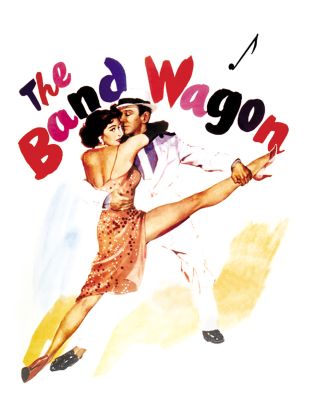Vincente Minnelli was celebrated for bringing new levels of sophistication to the movie musical in the 1940s and 1950s. While such musicals as Meet Me in St. Louis (1944) and An American in Paris (1951) made his name, Minnelli also directed highly regarded dramas, including the Hollywood story The Bad and the Beautiful (1952), and frothy comedies. Though his career faltered with the studio system's demise, his distinctive, fever-pitch sensibility endeared him to European and American cinèastes, ensuring his lasting reputation. Born to a Midwestern travelling theater family, Minnelli spent his childhood shuttling between relatives in Delaware and Chicago. After high school, he headed to Chicago to pursue a creative career, landing a job as a window dresser at the Marshall Fields department store. Honing his visual skills in this and subsequent work as a photographer's assistant and costume designer for live shows at premiere Chicago and New York movie houses, Minnelli earned accolades for his 1930s work as a costume/set designer and then as a stage director in New York theater. After an aborted attempt at movies in 1937, Minnelli finally heeded Hollywood's siren call, via MGM producer Arthur Freed, in 1940. Unimpressed with the state of movie musicals (except for Fred Astaire's work), Minnelli headed West to learn moviemaking as a low-ranking part of MGM's burgeoning Freed Unit. After staging numbers for the Judy Garland/Mickey Rooney vehicles Strike Up the Band (1940) and Babes on Broadway (1941), Minnelli earned his shot at directing with the all-black musical Cabin in the Sky (1943). Stylishly mounted on a low budget, Cabin in the Sky became a modest, critically praised hit. His third directorial try subsequently sealed his reputation as a singularly gifted musical director. With Freed behind him, Minnelli overcame resistance from the studio and recalcitrant star Garland to craft the musical hit Meet Me in St. Louis. A critical and popular smash, Meet Me in St. Louis established Minnelli as the Freed Unit's maestro and won him his first of four wives in Garland; their collaboration on the lyrical non-musical romance The Clock (1945) confirmed Minnelli's versatility. While his mobile camera injected life into the revue Ziegfeld Follies (1946), Minnelli's prodigious imagination was given even freer reign in two troubled musicals, Yolanda and the Thief (1945) and The Pirate (1948). Centering on romances between shady men and innocent girls in ornate fantasy settings, Yolanda and The Pirate each suffered from mismatched leads (Astaire and Lucille Bremer in the former, Gene Kelly and an unstable Garland in the latter) and what some considered an excess of art direction at the expense of story. Still, such charged numbers as "Coffee Time" in Yolanda and "Mack the Black" and "Be a Clown" in The Pirate made the films required viewing for musical fans. Despite the birth of daughter Liza, Minnelli and Garland's marriage fell apart after The Pirate and he took a break from musicals. Rather than harm his career, however, the hiatus made him even more valuable to MGM. Not only was his skill at translating his elaborate imagery to the needs of drama underlined by his version of Madame Bovary (1949), but the deft pacing of his musicals served him well when he turned to comedy with Father of the Bride (1950). Starring Spencer Tracy and Elizabeth Taylor, Father of the Bride made light of wedding traumas while hinting at Tracy's paternal anguish. Father became an enormous hit, begetting the sequel Father's Little Dividend (1951). Minnelli returned to musicals when Freed chose him to helm the ambitious An American in Paris (1951). Starring Gene Kelly and young ballerina Leslie Caron, scored with classic Gershwin songs, An American in Paris merged high art and pop entertainment in the story of an aspiring painter's romantic entanglements. Inspired by The Red Shoes (1948), the climactic 16-minute "American in Paris Ballet" rapturously soared through tableaux inspired by French paintings, as Minnelli's camera danced with Kelly and Caron. The Oscar for Best Picture capped An American in Paris' resounding artistic and popular success. Minnelli's remarkable run continued with The Bad and the Beautiful. A sharp black and white Hollywood exposé about a producer and the people he betrayed, The Bad and the Beautiful's chiaroscuro photography, emotive camera work, and intense performances by Kirk Douglas, Lana Turner, and Oscar-winner Gloria Grahame revealed the dark side of an industry driven by artifice. Minnelli made show business his subject once again in his next musical, The Band Wagon (1953). An astute, funny parody of the desire to turn entertainment into art, as well as a gorgeous merging of the two in the Astaire/Cyd Charisse set pieces "Dancing in the Dark" and "The Girl Hunt," The Band Wagon joyously celebrated the musical form and is considered Minnelli's greatest work in the genre. Working constantly throughout the 1950s, Minnelli churned out such sleek comedies as The Long, Long Trailer (1954), Designing Woman (1957), The Reluctant Debutante (1958), and the lavishly conceived -- if uninspired -- musicals Brigadoon (1954) and Kismet (1955). Irving Stone's biography of Vincent Van Gogh, though, recharged Minnelli's creative powers. Enlivened by Kirk Douglas as Van Gogh and Anthony Quinn as Gauguin, Lust for Life (1956) vividly recreated the colorful world of Van Gogh's paintings and the traumatic incidents of his life, earning several Oscar nods. Minnelli finally won his own Oscar with the musical of Colette's story Gigi (1958). Filmed on location in Paris and featuring an excellent score by Lerner & Loewe (including Maurice Chevalier's "Thank Heaven for Little Girls"), Gigi made exquisite blockbuster entertainment out of a potentially sordid story about a courtesan. Also scoring a critical hit with his adaptation of James Jones' chronicle of small town despair Some Came Running (1958), featuring Rat Packers Frank Sinatra, Dean Martin, and rising star Shirley MacLaine. Minnelli's two films earned a total of 13 Oscar nominations; Gigi went nine for nine, including Best Picture. Though the vivacious Judy Holliday musical Bells Are Ringing (1960) and Home From the Hill's (1960) operatic widescreen angst seemed to bode well for Minnelli's continuing creativity, changes in Hollywood and the audience precipitated a career decline. The ill-conceived, big-budget remake of The Four Horsemen of the Apocalypse (1962) was a disastrous flop; Two Weeks in Another Town (1962) was perhaps worse. An artistically adventurous companion piece to The Bad and the Beautiful, Two Weeks signaled classical Hollywood's decline, both in its story and reception. Recut by MGM against Minnelli's wishes, it was slammed by critics and shunned by audiences. His final films for MGM, The Courtship of Eddie's Father (1963) and The Sandpiper (1965), were commercially safe fodder. Despite the presence of new musical stars Barbra Streisand in On a Clear Day You Can See Forever (1970) and daughter Liza Minnelli in A Matter of Time (1976), Minnelli's old-school version of musical fantasy failed to cross over to the youthful 1970s audience, ending his directorial career. Hating idleness, Minnelli published his memoir I Remember It Well in 1974; once he stopped directing, he retired from all work. His daughters, film scholars, European honors, and the work of such film school grads as Martin Scorsese, though, confirmed his legacy before and after Minnelli passed away in 1986.

Vincente Minnelli
Share on
Biography by AllMovie
Movie Highlights
Factsheet
- Was born into a showbiz family; his father and uncle operated the Minnelli Brothers Tent Theater.
- Started as a department store window designer, then a photographer, then costume and set designer for a theater chain.
- In 1933, became the art director at Radio City Music Hall; later directed Broadway musicals.
- Was hired at MGM in 1940 and apprenticed for a year.
- Met Judy Garland on the set of 1940's Strike Up the Band; they married in 1945; their daughter, Liza, was born in 1946. Father, mother and daughter all won Academy Awards.
- Published his autobiography, I Remember It Well, in 1974.
- Directed Liza in the 1976 film A Matter of Time.


